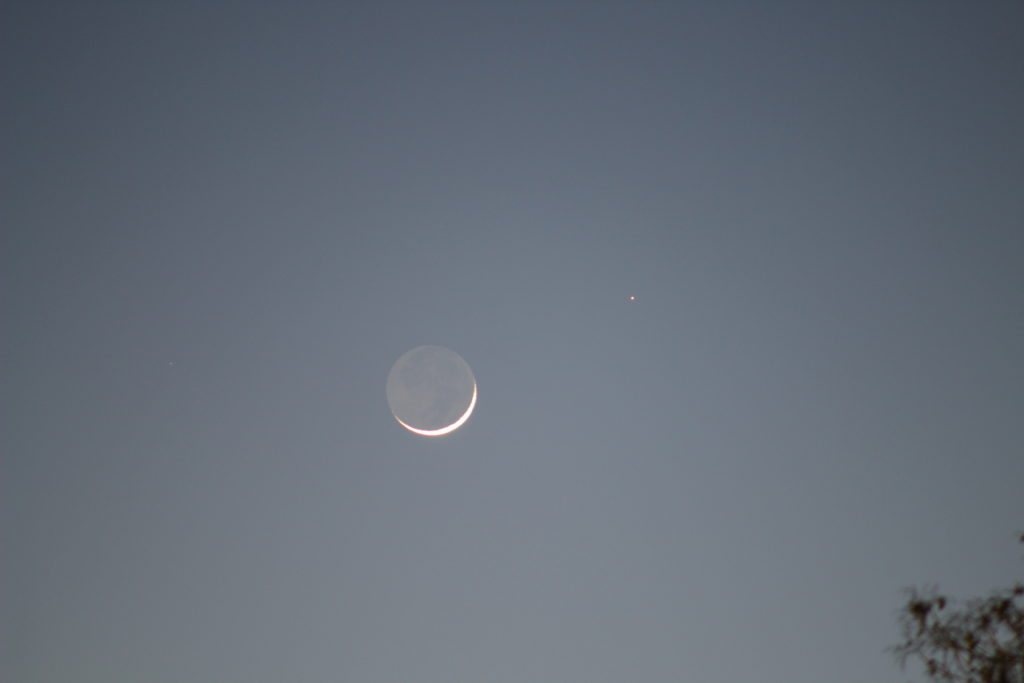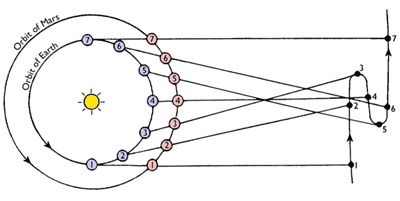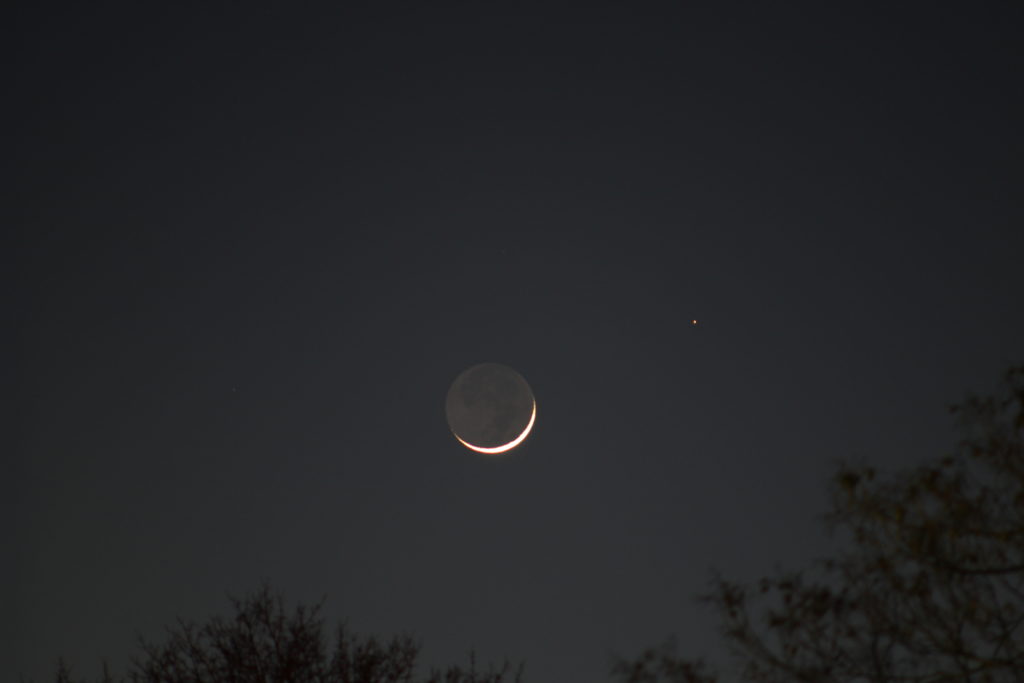Every 29.5 days we see a new Moon, or rather we don’t see it, since it’s lost in the glare of the Sun. But a few days after the new moon, we can see it slowly move away from the Sun and become visible after sunset, with the thinnest crescent growing a bit larger each night. You may have heard that Mars and Venus also live in the Western sky after sunset, with Venus moving higher and Mars appearing to double back toward the Sun, soon to be lost in the glare of our home star. Last night I was able to capture some pretty awesome shots of the Moon and Mars having a hangout, or conjunction, as is the technical term.

A few interesting things to note about the pics I took are that for one you can clearly see the reddish hue of Mars. It’s not always visible with the naked eye but shows up in photographs no problem. The other interesting thing is that the entire Moon is visible even though there is only a thin crescent illuminated. This photo isn’t much different than what we would see with just our eyes, but its weird that we can see the entire Moon. This is a phenomena known as Earthshine.
Earthshine occurs when the light from the Sun hits the Earth and is partially reflected back to the Moon, illuminating the surface of the Moon and making it brighter than the background sky. This happens predominantly during the days between a new Moon and first quarter, as more of the Earth is illuminated from the Moon’s point of view. It’s the same as when the night is brighter during a full Moon.
Mars appears to be moving toward the Sun, but in this case the red planet is on the opposite side of the Sun and has passed its retrograde point. It appears to change direction over the course of a few nights in the sky. Earth is closer to the Sun and so it moves faster in it’s orbit. Retrograde happens when Earth catches up to Mars and passes it in orbit. This also happens when Mars is on the opposite side of the Sun, as is the case this year.

We can expect to see the conjunction for a couple more nights before we will notice the Moon move closer to Venus in the evening sky as Mars is lost. This will give us a Moon-Venus conjunction in a few days, and I’ll see if I can sneak some pics of it.

It’s my first return to astrophotography in a few years so I’ve been enjoying the opportunity to play with my camera and lenses to see what I can capture. I’m really looking forward to this summer and an opportunity to go camping, where I can take some real star shots away from the bright city lights.

Dear Ryan,
may I use the “retrograde graphic” for an article about astronomy in our local newspaper?
And if yes, do you have it at a higher resolution?
Thanks in advance,
Alois (from Linz, Austria)
Hi! Thanks for the comment. I am not the original creator of this diagram, and though I had thought it came from NASA at the time, I did some digging and could not find an original source for the image. If you happen to find an original source, please share as I would love to properly credit this!